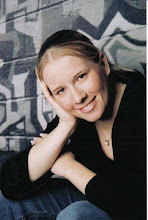“Die Judenbuche,” tells the story about Friedrich Mergel, son of Margreth and Hermann Mergel. The body of Hermann Mergel, the town drunkard who beats his wife, is found after freezing to death while intoxicated. He is taken under the wing of his uncle, Simon Semmler. After the death of Brandis, the forester, Friedrich suspects Simon, however, no justice is done. Around the age of twelve, we meet Friedrich’s double, Johannes Niemand (Nobody), who is believed to be the illegitimate son of Simon.
The villagers of the B consist of a drunkard, a wood thief and a murderer (Simon), a woman, who is disillusioned after she realizes that she cannot control her abusing husband and her son leaves, a feeble-minded youth who appears as Friedrich’s double, and then Friedrich, himself. A young, influential boy who grows up in these surroundings can easily fall ‘victim.’
After being confronted about money owed to the Jew Aaron, Friedrich is embarrassed in front of the whole village during the wedding. Three days later, the body of the Jew Aaron is found and Friedrich, suspected of his murder, is nowhere to be found.
28 years later, a stranger shows up in the village of B and takes refuge with local villagers. It is learned that this old, stranger is in fact Johannes Nobody. While running an errand, Johannes does not return and eventually his body is found hanging from the beech tree. Once the body is taken down, it is learned that the person really hanging from the tree is Friedrich Mergel. In the bark of the tree is an inscription ” If you approach this place, you will suffer what you inflicted upon me.” It is concluded that Friedrich killed himself over his guilt for killing the Jew Aaron.
After our class discussions, I realized that there are several various ideas that can be discussed about „Die Judenbuche.“ To begin with, there is the idea of whether this story fits the criteria of a novella. With following the classification of a Novella, one can determine that the “falcon” or “die Falke” of the story is the beech tree. This is where they find the murdered body of the Jew Aaron and eventually the body of his accused murderer, Friedrich.
We also talked about the symbolism of the tree. One interesting idea is that a tree is often seen as the symbol of life. The irony being that so much death is seen around the main tree in our story. Or how, today, our ancestral heritage is often seen in family trees. The first death by the beech tree was Friedrich’s father, Hermann and the last death in this story was Friedrich’s. The other two deaths, Brandis the forester and the Jew Aaron, were committed by members of the same family, Friedrich’s uncle Simon and Friedrich, respectively.
There is another interesting aspect of the Doppelgänger, or ghostly double of a person. It is believed by some that somewhere in the world, there is a person who is just like us. Whether you believe this, or not, is up to you. However, this concept is apparent in “Die Judenbuche.” Friedrich meets his own double, Johannes, who it is believed to be the illegitimate son of Simon. This would make it Friedrich’s cousin, and, therefore, the resemblance between the two is no real coincidence. After what is believed to be Johannes’ body is removed from the beech tree, one person is able to identify it as Friedrich based on a scar. The boys were so much alike that it was only a small scar that helped a villager distinguish between the two.
Sources:
Coenen, Frederic E. The "Idee" in Annette von Droste-Hulshoff's Die Judenbuche. The German Quarterly. Vol. 12, No. 4 (Nov., 1939), pp. 204-209. http://www3.northern.edu:2105/stable/pdfplus/400421.pdf
Karlsen, Kathleen. „The Symbolism of Trees.“ 19. March 2010. http://www.livingartsoriginals.com/infoforests.htm
Subscribe to:
Post Comments (Atom)

No comments:
Post a Comment